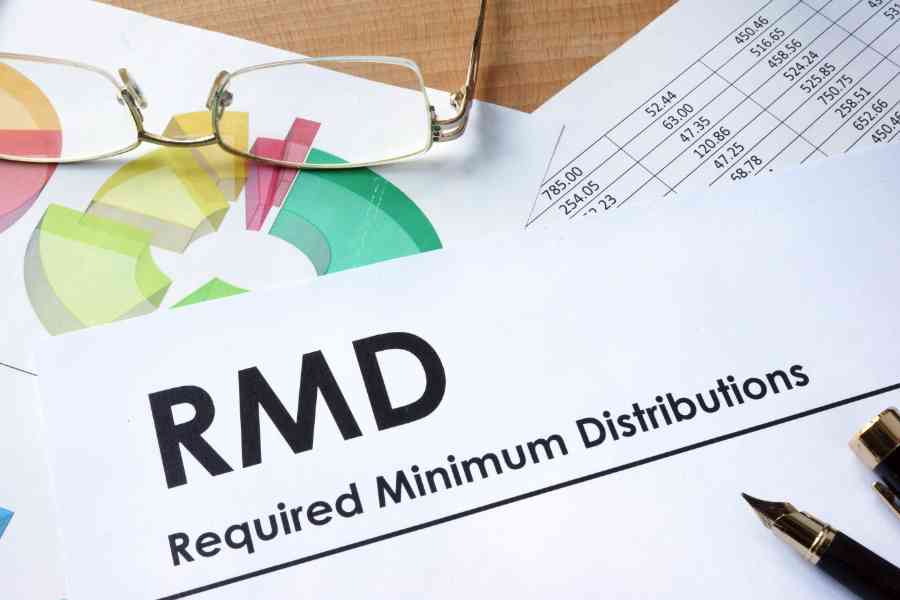Executive Summary
Over the course of the holidays and following weeks, we have spent a great deal of time reading forecasts for 2021 from leading economists, financial research institutions, and other experts. Coming off one of the most challenging economic years in history due to COVID-19, we felt it necessary and beneficial to aggregate the consensus forecasts, offer a synopsis of the path ahead, and provide our views on the economic environment.
The spikes in COVID-19 cases, change in political administration, underlying fundamentals of both the US and Global Economy all have impacts for the coming year. While our planning model and plans we put in place inherently combat/minimize the effects the macro-environment has on your financial health (think, Economic Termites), we still believe the situation warrants addressing. Thus, we will dive into the points we believe warrant special attention and what it could possibly mean for you.
There is broad consensus, and the data suggests, we will experience another recession in Q1 and Q2 – partly offset pending the passing of additional fiscal stimulus. Large divergences among industries and countries continues, especially in Europe where double-dip recession is all but inevitable.
The good news, however, is that there is near unanimous agreement in a strong rebound/expansion the second half of the year.
Increasing vaccination rollouts indicate a decreased likelihood of additional lockdowns in the second half of the year. Projected short-term inflation remains low. Expectations for the Federal Reserve to keep short-term federal funds rate near zero, record household savings ending 2020, and real GDP output of 4.6%, all provide light at the end of the tunnel for 2021.
Now, as with most expert forecasts that are in almost unanimous agreement, we approach these with a healthy skepticism and caution. The crowd, so to speak, is often wrong. Nonetheless, we will summarize the collective projections for this year and offer our guidance.
2020 In Review
Unemployment
Last year was historical by many accounts. A booming economy came to a screeching halt. In a few months, we went from record highs in employment, to record highs in unemployment. Last month when the December Jobs report was released, we saw that unemployment rate remained unchanged from the previous month at 6.7%, with the number of unemployed persons at 10.7 million. At first glance, that seems relatively positive. After all, after months of increasing unemployment, a flat line seems like welcoming sign. Although both measures are much lower than their April highs, they are nearly twice their pre-pandemic levels in February (3.5% and 5.7 million, respectively).
Small Business Trends
Small business was hit exceptionally hard. Deemed nonessential, accompanying business owners were forced to ran sac their savings or retirement assets to keep the doors open and feed their families, or, shut down entirely. People’s entire life’s hard work, gone in less than 12 months.
The NFIB Small Business Optimism Index December 2020 Report cited a 5.5-point decline in December to 95.9, falling below the average Index value since 1973 of 98. Chief Economist Bill Dunkelber for the National Federation of Independent Business (NFIB), explains:
“This month’s drop in small business optimism is historically very large and most of the decline was due to the outlook of sales and business conditions in 2021. Small businesses are concerned about potential new economic policy in the new administration and the increased spread of COVID-19 that is causing renewed government-mandated business closures across the nation.”
The good news: looking back to when lockdowns were temporarily lifted, in Q3 of 2020, the rebound in economic activity was much faster than anticipated in nearly all economies.
2021 Forecasts and Implications
Inflation
The Consumer Price Index (CPI) measures the change in prices paid by consumers for goods and services. The CPI reflects spending patterns for each of two population groups: all urban consumers and urban wage earners and clerical workers. The CPIs are based on prices of food, clothing, shelter, fuels, transportation, doctors’ and dentists’ services, drugs, and other services and goods bought for day-to-day living.
The all-items CPI-U rose 1.4 percent in 2020. This was a smaller increase than the 2019 increase of 2.3 percent and the smallest December-to-December increase since the 0.7-percent rise in 2015. The all-items index rose at a 1.7 percent average annual rate over the last 10 years.
2021 Inflation
The Federal Open Market Committee (FOMC) – the monetary policymaking body of the U.S. Federal Reserve System seeking to foster price stability – publishes inflation projections from its all twelve members four time a year in connection with their meetings in March, June, September, and December.
FOMC, in its latest meeting on December 11, 2020, forecasted that the PCE inflation rate in the US will increase to 2.0% in 2021 and stabilize at this level through 2022.
PCE inflation refers to the percent change in the personal consumption expenditures price index. CPI inflation and PCE inflation measurements differ slightly. We feel it is better to evaluate both numbers. US CPI inflation will be within the range from 2.1%-2.3% for 2021.
In either calculation, the short-term inflation facing the US economy is well within healthy boundaries and expectations. Therefore, it is our position that for the short-term, inflation is not to be of significant concern – barring any change in any of the indicators. If indicators shift, and runaway inflation picks up, we will reevaluate.
Tax Changes
What can we expect with new administration in terms of tax reform? Let us dive in President Biden’s Tax Agenda:
Individuals
Raise the top individual income rate from 37% to 39.6%.
Taxpayers with more than $1 million of taxable income would pay ordinary income tax rates on capital gains and qualified dividends (instead of the lower capital gains tax rate).
Impose Social Security taxes on taxable income above $400,000. Currently this only applies to income above the Social Security wage base (set at $142,800 in 2021).
New tax incentives for the purchase of long-term care insurance (details not specified).
Changes related to contributions to qualified retirement plans to “equalize” the tax benefits for all levels of income (details not specified).
Repeal the $10,000 cap on SALT deductions (deduction for state and local taxes). However, another proposal would limit the tax benefits of itemized deductions to 28% of value for those making over $400,000. For example, a taxpayer making over $400,000 who has $50,000 of itemized deductions would be limited to using $14,000 of those deductions.
Business
Raise the corporate tax rate from 21% to 28%.
Phase out of the 20% qualified business income deduction for taxpayers with taxable income above $400,000.
Revise the tax-free nature of 1031 exchanges (exchanges of commercial real estate) such that it applies only to those with taxable income under $400,000. This has not been promoted heavily by the Biden campaign.
Impose a 15% corporate minimum tax on book income (applicable only to companies with $100 million or more of net income but which owe no U.S. income tax).
Other Trends/Forecasts/Implications
Economic Growth
GDP for 2021 projected to rebound to a 4.2% growth.
Slowing thereafter to 3.2% in 2022 and 2.4% in 2023.
(FOMC December Release)
Oil and Gas Prices
The U.S. Energy Information Administration (EIA) predicts crude oil prices will average $49 per barrel 2021 for Brent global. Accompanied by a rise in U.S. oil prices.
*NOTE: The forecast does not factor in the pandemics impact on oil prices
Author’s Notes:
This newsletter was written by Kurtis DeSousa under the supervision of Robert Wolf, RFC and Terra Firma Business and Financial Consultants, LLC. This information is meant to be general and educational in nature and intent. The information contained in this document is not to be meant to be taken as investment or tax advice. Please consult your financial and tax professional prior to making any financial decision.
Kurtis DeSousa is a Junior Asset Coach and Tax Strategist. Kurtis works as Client Services Assistant for Terra Firma. He holds a bachelor’s degree in Finance and Organizational Leadership from Arizona State University. Kurtis is in the process of obtaining his securities license and enrolled in the Standard Pathway for earning his CFP designation.
Disclaimer
“Terra Firma Business and Financial Consultants, LLC is a comprehensive consulting firm. Our goal is to assist our clients in determining the appropriate planning needs for today with flexibility to help determine possible exit strategies in the future. Our main goal is to educate you on the necessary strategic plans and designs that are available today to assist you in meeting your goals. We bring our expertise to inform and educate on the strategies available within the guidelines of your goals and objectives. We want to help you protect what you’ve worked so hard to earn and we are dedicated to accomplishing this goal!
All materials provided or communicated are not to be intended to be used, nor can it be used by any taxpayer for the purpose of avoiding U.S. federal, state or local tax penalties. Any taxpayer should seek advice based on the taxpayer’s particular circumstances from their own legal and tax advisors. Terra Firma Business and Financial Consultants, LLC and its consultants and/or affiliates do not provide legal or tax advice.
NOTICE: Nothing in this message should be interpreted as a digital or electronic signature that can be used to form, execute, document, agree to, enter into, accept or authenticate a contract or legal document unless otherwise expressly stated herein. This message and any attached documents contain information from the sender that may be confidential and/or privileged in nature. This message and any attached documents are intended only for the use of the intended recipient and any applicable privileges are not waived by virtue of this having been sent by e-mail. If you are not the intended recipient, you may not save, read, copy, distribute, or use this information in any way or for any purpose. If you have received this transmission but are not the intended recipient, please notify the sender immediately by reply e-mail and then permanently delete this message and any attached documents.
IRS CIRCULAR 230 DISCLOSURE: United States Department of Treasury Regulation Circular 230 requires that I notify you that, with respect to Federal Tax penalties only, unless expressly stated otherwise above, (1) You cannot rely on this advice for protection against Federal tax; (2) nothing contained in this message was intended or written to be used, can be used by any taxpayer, or may be relied upon for the purpose of avoiding any federal tax penalty under the Internal Revenue Code; and (3) nothing contained in this message may be relied on to support the promotion or marketing of any Federal tax transaction or matter that may be subject to Federal tax penalties. Any taxpayer may seek advice based on the taxpayer’s particular circumstances from an independent tax advisor with respect to any Federal tax transaction or matter contained in this message as it relates to Federal tax penalties.”




